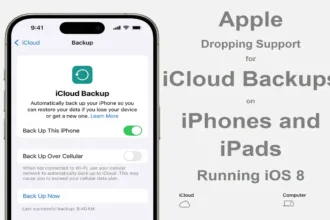The software market has received a powerful impetus for improvement due to the active development of information technology in the past few years. More than five billion people around the world use mobile gadgets today.
Modern mobile technologies are widely used everywhere. Tablets, smartphones, and other mobile devices are essential in personal life, home, and work. For example, a person can quickly write and send an e-mail, scan a necessary document, receive an important fax on a mobile phone, and so on. With the spread of mobile devices, such a direction of software as mobile applications has gained wide popularity.
Role of Mobile Applications in Business
Mobile technologies are the latest and most relevant trend in the development of the information technology market for the automation of business processes. iPhones are increasingly penetrating the corporate environment and turning from personal mobile devices into work tools for many managers and employees. As a result, company and organization leaders are thinking about centrally implementing and using these technologies in the interest of the business.
The development of business applications for mobile devices is necessary to promote goods or services to a wide audience. According to Reteno articles, in-app messages successfully cope with this task. If you create an application taking into account the interests of potential users, it will increase loyalty and trust in the brand, as well as help optimize the performance of the tasks to be solved. Thus, for example, mobile banking makes it possible to monitor, pay bills, transfer funds, etc.
Practice shows that the development of mobile applications is relevant in a variety of business industries. These include online stores, transport services, cafe and restaurant chains, corporate communication, etc. If you are interested in this, learn more about the advantages and features of iPhone app development below.
Advantages of Business Application Development for iPhone
The main advantages of an iPhone business app development are as follows:
- Accessibility. People regularly use iPhones for various tasks (reading the news, shopping, communicating with friends, etc.). By creating an effective mobile application, you will thus launch a convenient sales and communication channel for your target audience;
- Flexible advertising format. Unobtrusive ad inserts can be integrated into the mobile application. This does not affect the usability of the interface. So you can make a profit even from a free application;
- Great coverage. According to research, there are many more people who use mobile phones than those who use PCs today. Approximately 5 billion people have an iPhone or even several such devices. In this regard, mobile platform applications have a high growth potential;
- Space for innovative solutions. Thanks to high-speed communication standards, large computing power, and a set of iPhone multimedia modules, the mobile application is an excellent space for implementing various innovative solutions;
- Convenient payment process. It is possible to connect paid options in the mobile application. At the same time, users can easily pay for services without any settings and data inputs;
- Prompt support. Mobile app users can ask questions, receive tips, and find relevant information at any convenient time.
iPhone Application Development: A Step-by-Step Guide and Helpful Tips

The iPhone application development process can be divided into several stages:
- Analysis. In the first stage, it is necessary to analyze the target audience and the market and study demand. It is recommended to update the client profile. Based on the conducted marketing research, you need to choose a strategy to make an application on iOS;
- Creation of specifications and prototypes. The stage implies the creation of a detailed technical assignment for the implementation of the project. The terms of reference should describe all the nuances of development;
- Final planning and cost estimation. This is the last of the preparatory steps before you create your application for the iPhone. The development timeframes are determined at this stage, and important points are fixed. The tasks should be divided into a week or two intervals. Each time has its own goals;
- Design development. Depending on the project’s complexity, one designer and a team led by an art director can join the creation of layouts. The involvement of the team and the art director is justified in cases where it is necessary to develop a unique design concept. In other cases, you can resort to unique design templates and layouts for a specific project;
- Application development. This is the main stage at which developers write code and implement the functionality of the project. To reduce development time, programming should be done in the chosen framework;
- Testing. For the correct operation of the application after launch, it is worth testing the functionality and design before publication. Testing for the iOS operating system is usually faster because it has a much smaller number of devices than, for example, the Android OS;
- Publication in the app store. This is the last step in creating the iPhone app, but it’s not easy. First, you need to register a developer account, which will be moderated. Moderation can take up to a month, so such an account should be prepared in advance. In addition, the moderation of the app itself will be pretty serious, so it is worth paying special attention to each stage of development in order to avoid rejection of the application.
Once the application is launched, the work is not completed. It can be improved by adding new functions and features.
Conclusion
The development of iPhone applications from scratch should be based on a number of rules. Firstly, it is necessary to provide a convenient interface on different screens. Secondly, it is advisable to ensure the application’s stability on different operating system versions. Thirdly, it’s important to consider all the requirements of the App Store Review Guidelines when publishing an app, etc.
In fact, the list of requirements is quite large. In addition, it can be expanded depending on the type of application. But following the main development principles described in this article allows for generating really high-quality products.






